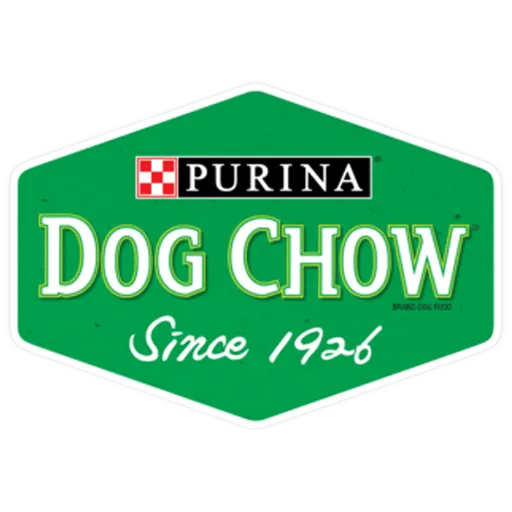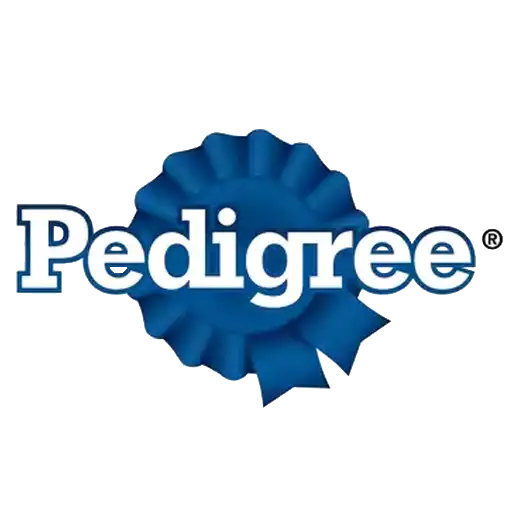Worst Dog Food – 10 Dog Food Brands We DO NOT RECOMMEND
Quick Guide
Bad dog food versus good dog food – Can you recognize the difference?
Before we dive into the 10 worst dog food brands, let’s recognize a few important facts about what’s good and what’s bad in dog food.
There are a few common misconceptions about food for dogs.
One misconception is that any dog food with grains is automatically unhealthy. In reality, grains can be a valuable source of nutrients for dogs, and many high-quality dog foods include whole grains in their formulations.
Another misconception is that a dog food labeled as “natural” or “organic” is always superior. While these labels can indicate higher-quality ingredients, it’s important to assess the entire ingredient list and nutritional profile of the food.
Additionally, the belief that a dog food must be expensive to be good is not accurate. Price alone doesn’t determine the quality or nutritional value of a dog food. It’s crucial to evaluate the ingredients, nutritional content, and consult with a veterinarian to make an informed decision about the best food for a dog’s specific needs.
Finally, dog food packaging can often be misleading, employing clever tactics by portraying captivating images of wolves running through expansive mountain ranges, pristine streams, and lush forests. These picturesque scenes create an illusion of a truly natural and wild diet for our beloved canine companions. However, this marketing ploy can be deceptive, as the contents within may not align with the portrayed imagery. While wolves may represent the ancestral roots of dogs, the actual ingredients in the dog food might be far from the fresh, wholesome, and untamed image depicted on the packaging.
So what’s the secret to identifying bad dog food?
Understanding how to read dog food labels is crucial in determining whether a particular brand or product is healthy and appropriate for your pet. Much like food for humans, the ingredients and nutritional content of dog food can vary greatly, and some products may contain elements that are not good for your dog’s health.
Brand reputation can also be an important factor in determining whether a dog food is of high quality. This is because brands with good reputations often have consistent standards and a history of producing reliable, quality products without an extensive recall history.
Let’s take a look at some of the worst ingredients on a dog food label.
We’ll start out by identifying specific ingredients that tell you a lot about the quality of the food.
As a general rule of thumb, remember that the first three ingredients on the cat food label should be meat. If corn, peas, or rice are in the first, second, or third spot on the cat food label, pass up that product.
Remember that ingredients are ordered by weight.
Ingredient splitting is a common tactic used to create the illusion of a higher meat concentration. If a food contains multiple variations of corn, for example, it’s possible that, if all the corn ingredients were lumped together, they would be the first ingredient on the list.
Generic Meat or Meat Meal
If a meat source is not clearly identified (for example, it’s listed as “meat meal” rather than “chicken meal”), this can be a sign that lower-quality, less nutritious sources have been used.
Corn Syrup, Fructose, Sucrose, or Other Added Sugars
These ingredients can lead to obesity, diabetes, and other health issues in dogs, much like in humans.
Propylene Glycol
Used as a food additive to maintain moisture and prevent bacteria growth, propylene glycol (a less toxic version of anti-freeze) can be harmful in large amounts.
BHA, BHT, Ethoxyquin
These are chemical preservatives linked with potential health problems like cancer. Natural alternatives, like tocopherols (vitamin E), are safer.
Artificial Colors
Artificial colors (like Yellow 5, Red 40, and Blue 2) offer no nutritional benefits and have been associated with allergic reactions and other health issues.
Artificial Flavors
Artificial flavors are unnecessary if quality ingredients are used. They can also mask the taste of low-quality ingredients.
Animal By-products
These are rendered products from animal tissues, excluding hair, horns, teeth, hooves, and feathers. They can contain parts like beaks, feet, and other low-nutrition parts. The source of these by-products is often unclear.
Soy, Corn, Wheat Glutens
Gluten is the protein part of these grains. It’s often used as a cheap protein source but can be difficult for dogs to digest and cause allergies in some.
Rendered Fat
Generic rendered fat, such as “animal fat,” can come from multiple sources, including diseased or dead animals. Named fats, like “chicken fat,” are better choices.
Cellulose
Cellulose, sourced from wood or plant fibers, is used as a filler or to provide texture. It has no nutritional value.
Pay attention to the brand’s reputation.
A history of ethical behavior on the part of the manufacturer and parent company promises a high-quality product that will continue to nourish your dog for years.
Signs that you’re dealing with an unethical dog food company:
Frequent Recalls
While an occasional recall can occur even in reputable companies due to unforeseen issues, frequent recalls indicate persistent quality control problems. It suggests that the company is not taking sufficient measures to ensure the safety and quality of its products and therefore doesn’t have your dog’s best interests in mind.
If a company has had a recall more than twice in 3 years that’s the threshold for our team to take a closer look at downgrading a recommendation.
Cover-Ups
If a company is found to be hiding issues related to its products or manufacturing process, it raises significant concerns about transparency and integrity. This behavior may imply that profit is prioritized over the health and wellbeing of pets.
Pet owners have the right to know what they are feeding their dogs, and companies should be forthcoming about their ingredients, sourcing, and manufacturing practices.
Scandals
Scandals, such as mislabeling products, using subpar or harmful ingredients, or failing to meet nutritional standards, can severely damage a company’s reputation.
These issues not only demonstrate a lack of honesty and integrity but can also lead to serious health risks for pets.
Opaque Sourcing
A trustworthy dog food company should be fully transparent about its practices, including where and how its products are made. This not only includes clear information about where they source their ingredients, but also about their manufacturing processes. Companies should provide insights into whether their ingredients are ethically sourced, free from harmful substances like pesticides or antibiotics, and detail where their meat comes from.
In addition, many brands utilize co-packers or contract manufacturers to produce their products. While this isn’t inherently problematic, it could potentially raise concerns if the dog food company isn’t stringently overseeing the quality control processes, which could impact the consistency and quality of the product.
Furthermore, the manufacturing location also plays a pivotal role. Different countries have varying standards and regulations for pet food production, with products made in countries like the USA, Canada, Australia, and Western Europe often held to stricter manufacturing regulations compared to some other regions.
However, bear in mind that the sourcing location of the ingredients might not always align with the manufacturing location. Therefore, transparency on both fronts is crucial. If a company is vague about any of these details or avoids answering questions about their sourcing or manufacturing practices, it can suggest that their operations might not be up to standard, or worse, that they may not even be aware of them.
A History of Customer Complaints
How a company responds to recalls or other problems can be telling. Good companies will act swiftly to rectify the issue, notify customers promptly, and take steps to prevent future occurrences.
If a company is slow to respond, fails to address the problem adequately, or does not communicate openly with customers, it can be a sign of poor business practices.
A note about vet recommended dog food
The relationship between veterinarian recommendations and pet food choices can be complex. While many vets have your pet’s best interests at heart and provide valuable advice, it’s crucial to understand some key factors.
Firstly, the level of nutrition training that veterinarians receive can vary widely. While they are experts in animal health and disease, not all veterinary programs provide extensive education specifically on pet nutrition. As a result, some vets may not be fully updated with the latest research or the broad range of dietary options available on the market.
Moreover, pet food manufacturers sometimes use marketing tactics targeted at veterinarians, such as providing free samples, sponsoring nutritional education, or offering financial incentives. This could potentially influence a vet’s recommendation, especially if they are less familiar with the diversity of dietary options and the nuances of pet nutrition.
That being said, it’s crucial not to dismiss the advice of veterinarians outright. Many vets take additional steps to educate themselves about nutrition, stay updated with the latest research, and make recommendations based on a careful assessment of a pet’s individual needs. Their insights, particularly when it comes to managing specific health conditions through diet, can be invaluable.
The 10 Worst Dog Food Brands
1. Ol’ Roy
Canned and dry dog food

2. Purina Dog Chow
Dry dog food

3. Gravy Train
Wet dog food

4. Rachael Ray Nutrish
Dry and wet dog food

5. Iams
Dry and wet dog food

6. Alpo
Dry and wet dog food

7. Pedigree
Wet and dry dog food

8. Kibbles ‘N Bits
Dry dog food

9. Hill’s Pet Nutrition Science Diet
Dry and canned dog food

10. Kal Kan
Dry dog food

Recap – The Worst Dog Food Brands
Ensuring that your dog receives proper nutrition is essential for their health and well-being. Unfortunately, there have been instances where certain dog food brands have been associated with quality and safety concerns. These concerns can range from inadequate nutritional content to contamination issues that can pose risks to dogs’ health.
Instances of bad dog foods often involve ingredients of questionable quality, such as fillers, artificial additives, and low-quality protein sources. Some dog foods have been found to contain harmful substances like mycotoxins, which are produced by mold and can lead to various health issues. Inadequate quality control measures and insufficient regulation can contribute to the presence of such problems in certain dog food brands.
To ensure that your dog receives the best nutrition possible, it is crucial to research and select a high-quality dog food brand. Look for products that prioritize real, whole food ingredients and avoid unnecessary additives. Consulting a veterinarian or conducting thorough research can help you identify reputable brands that prioritize the health and well-being of dogs.
Recommendation:
To find detailed information about the best dog food options available, I recommend reading our best dog food article. This article will provide insights into the top-rated dog food brands based on their quality, ingredients, manufacturing practices, and customer reviews. Remember, every dog is unique, so it’s important to consider your dog’s specific needs and consult with a veterinarian to make an informed decision about their diet.











